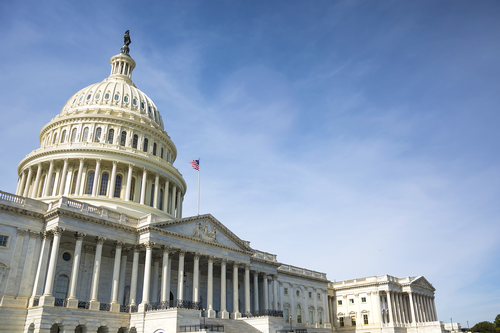FRIDAY, APRIL 1, 2022
On Wednesday (March 30), the U.S. Department of Energy released new building energy code requirements for federal buildings and proposed new standards for residential room air conditioners, pool heaters and other consumer appliances.
The latest efforts are expected to save taxpayer dollars and ensure that the federal government leads by example in energy efficiency.
“The Biden Administration is leading by example to cut energy use and reduce its carbon footprint by adopting the latest building standards that drive down operating costs and therefore save taxpayer dollars,” said U.S. Secretary of Energy Jennifer M. Granholm. “Coupled with the appliance standards proposed today for American households, DOE is reiterating our commitment to reaching net zero carbon emissions, improving our air quality and keeping more money in the pockets of families across the country.”
Given the proposed standards and new codes, the DOE estimates that together they could potentially save more than $15 billion in net costs over the next 30 years and reduce emissions equivalent to the annual carbon emissions of 14.4 million homes over the same period.
The latest announcement follows the priorities previously set out by President Joe Biden’s bipartisan Infrastructure Law, which includes an unprecedented $225 million for state and local implementation of energy codes.
Plans to Strengthen Building Performance
During the U.S. Conference of Mayors annual winter meeting in January, President Biden announced that his Administration would be launching a Building Performance Standards Coalition dedicated to delivering cleaner, healthier and more affordable buildings.
The coalition is reportedly a first-of-its-kind partnership between 33 state and local governments, in addition to the states of Colorado and Washington, and builds upon the Department of Energy’s efforts to upgrade one million homes.
The progress made by the coalition will also aid President Biden’s efforts to retrofit four million buildings and two million homes during his first term.

 |
| rarrarorro / Getty Images |
|
On Wednesday (March 30), the U.S. Department of Energy released new building energy code requirements for federal buildings and proposed new standards for residential room air conditioners, pool heaters and other consumer appliances. |
According to reports, the coalition plans to outline new commitments to design and implement building performance standards at the state and local level, create good-paying, union jobs, lower energy bills for consumers, keep residents and workers safe from harmful pollution and cut emissions from the building sector.
The actions build on the $3.5 billion investment for home weatherization in President Biden’s Bipartisan Infrastructure Law—which will make 700,000 homes more energy efficient and lower consumers’ electricity bills—and will make $1.8 billion available to expand building retrofits and policy implementation.
The White House reports that the New Buildings Performance Standards Coalition is supported by labor unions, philanthropy and non-governmental organizations. All those involved plan to come together to scale programs and policies to reduce emissions across the building sector.
Other actions made to strengthen building performance standards include:
The ultimate goal of the coalition is to advance legislation or regulation in each of the committed jurisdictions by April 22, 2024.
What Now
Starting in April 2023, all new buildings and major retrofits constructed by the federal government must be in compliance with the 2021 International Energy Conservation Code (IECC) and the 2019 American Society of Heating, Refrigerating, and Air Conditioning Engineers Standard 90.1 building energy codes.
During the first year of its implementation, the DOE estimates that $4.2 million dollars in operating costs will be saved. In an analysis of states following the latest IECC building energy codes, the DOE found that consumers would see $3.24 billion in annual energy cost savings.
In further research, the DOE noted that residential buildings specifically would result in national site-energy savings of approximately 9%, source-energy savings of nearly 9% and energy-cost savings of more than 8% if they were following the 2021 standards verses 2018.
Changes made to the IECC 2021 version as compared to the previous 2018 edition include:
In July of the same year that the new codes were updated, the IECC launched its “Code on a Mission” challenge, which aims to have over a third of the U.S. population covered by the 2021 IECC by the end of 2023. As a part of the challenge, the IECC asked the building industry and communities alike to update their building energy codes to meet or exceed the requirements of the 2021 IECC.
In addition to these recent efforts on improving federal building standards, the DOE is also seeking comment from stakeholders on two proposed residential-focused rules for 60 days and will hold a public meeting to solicit feedback from industry and energy-efficiency stakeholders:
By the end of 2022, the Biden-Harris Administration intends to finalize more than 100 proposed and final actions for appliance and equipment standards.
Tagged categories: Building codes; Carbon dioxide; Carbon footprint; Commercial / Architectural; Commercial Buildings; Construction; Design - Commercial; Emissions; Energy codes; Good Technical Practice; Government; President Biden; Program/Project Management; Projects - Commercial; Quality Control; Residential